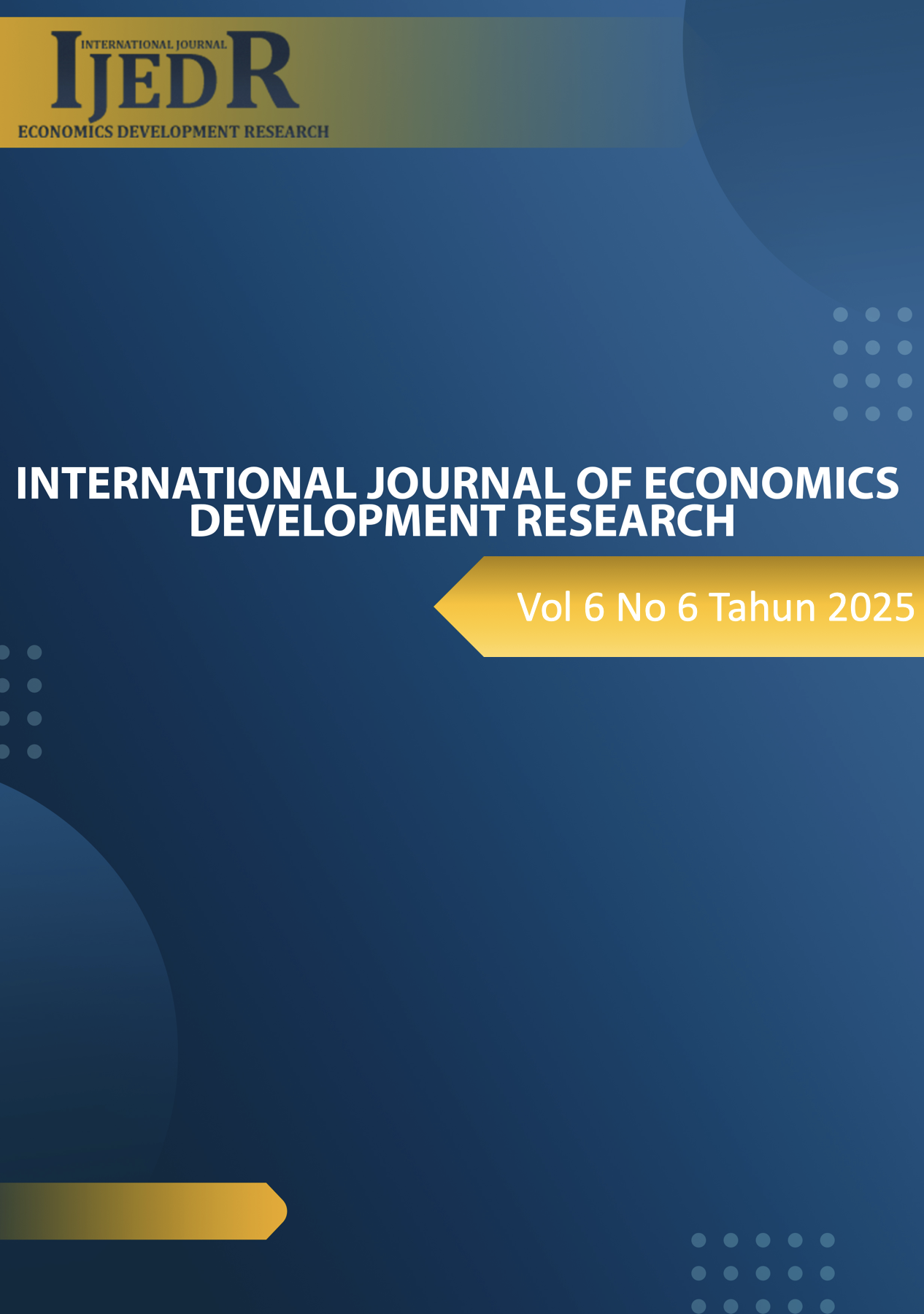Linking Performance, Policy, and Supervision to Revenue Growth in Public Roadside Parking Services: Evidence from Buleleng Regency
DOI:
https://doi.org/10.37385/ijedr.v6i6.9471Keywords:
Performance, Policy, Supervision, Retribution Revenue, Buleleng Regency, Multiple Linear RegressionAbstract
This study aims to analyze the effect of performance, policy, and supervision on retribution revenue in Buleleng Regency. Using a quantitative approach, data were collected from 110 employees of the local Department of Transportation responsible for managing public parking services. The study employed multiple linear regression analysis to test the influence of the independent variables—performance, policy, and supervision—on the dependent variable, retribution revenue. Reliability and validity tests confirmed that the research instruments were consistent and accurate. Classical assumption tests, including normality, multicollinearity, and heteroskedasticity, indicated that the regression model met the necessary criteria. The results of the t-test show that each independent variable has a significant positive effect on retribution revenue, with performance having the strongest influence, followed by supervision and policy. The F-test results further confirm that all independent variables collectively impact retribution revenue. The coefficient of determination (Adjusted R² = 0.647) indicates that 64.7% of the variance in retribution revenue can be explained by the independent variables, while the remaining 35.3% is influenced by other external factors. This study concludes that improving employee performance, implementing strategic policies, and enhancing supervision are essential for increasing retribution revenue. The findings provide practical implications for local government management and suggest directions for future research to include broader contexts, qualitative insights, and the integration of predictive analytics in revenue optimization.
References
Abdelghaffar, H. M., Batista, S. F. A., Rehman, A., Cao, J., Menendez, M., dan Jabari, S. E. 2024. Perbandingan model estimasi waktu mencari parkir secara probabilistik. Transportation Research Bagian A: Kebijakan dan Praktik, 184, 253–271. https://doi.org/10.1016/j.tra.2024.11.0xx
Eliasson, J., dan Borjesson, M. 2022. Biaya dan manfaat pengenaan tarif parkir di area perumahan. Transportation Research Bagian B: Metodologi, 166, 95–109. https://doi.org/10.1016/j.trb.2022.10.0xx
Gu, Z., Li, Y., Saberi, M., Rashidi, T. H., dan Liu, Z. 2023. Dinamika parkir makroskopik dan penetapan harga yang adil: Integrasi model perjalanan dengan optimisasi berbasis simulasi. Transportation Research Bagian B: Metodologi, 173, 354–381. https://doi.org/10.1016/j.trb.2023.06.0xx
Guo, J., dkk. 2023. Analisis pemanfaatan ruang parkir secara menyeluruh: Dampak ekonomi dan tipe konsumen. Sustainability. https://doi.org/10.3390/su16xxxx
Guo, J., Guan, H., Han, Y., dan Xue, Y. 2024. Analisis potensi dampak ekonomi pemanfaatan ruang parkir secara menyeluruh pada kawasan bisnis tradisional. Sustainability, 16(1), 28. https://doi.org/10.3390/su16010028
Guo, J., dkk. 2024. Parkir bersama dan potensi pendapatan pada kawasan bisnis tradisional. Sustainability, 16(1), 28. https://doi.org/10.3390/su16010028
Maxner, T., dkk. 2023. Analisis simulasi berbagai tipe ruang tepi jalan dan kinerjanya dengan alokasi dinamis. Journal of Curb Management, 1(1), 1–15. https://doi.org/10.1080/21680566.2023.2212324
Ogulenko, A., Benenson, I., dan Fulman, N. 2022. Karakteristik pencarian parkir di tepi jalan. Transportation Research Bagian B: Metodologi, 166, 48–68. https://doi.org/10.1016/j.trb.2022.10.007
Pavlek, H., Slavulj, M., Ivankovic, B., dan Vidan, L. 2025. Model penentuan permintaan parkir menggunakan simulasi harga. Applied Sciences, 15(12), 6603. https://doi.org/10.3390/app15126603
Ramirez-Rios, D. G., dkk. 2023. Parkir tepi jalan untuk logistik dan layanan: Pemodelan permintaan parkir komersial perkotaan. Transportation Research Bagian D: Transportasi dan Lingkungan. https://doi.org/10.1016/j.trd.2023.103xxxx
Shoup, D. 2021. Penetapan harga parkir tepi jalan. Transportation Research Bagian A: Kebijakan dan Praktik, 154, 399–412. https://doi.org/10.1016/j.tra.2021.04.012
Wang, H. 2025. Analisis prediktif untuk optimalisasi pendapatan parkir perkotaan. Transport Analytics and Data Science Journal. https://doi.org/10.1016/j.ta.2025.05.0xx
Xu, Z., dan Sun, X. 2024. Analisis ekonomi parkir tepi jalan dengan pengiriman kota. Transportation Science, 58(6), 1300–1318. https://doi.org/10.1287/trsc.2024.0569
Zhao, X., dkk. 2024. Peningkatan model prediksi okupansi parkir tepi jalan: Integrasi GCN adaptif dan GRU dengan kategori rumah tangga dan faktor POI. Mathematics, 12(18), 2823. https://doi.org/10.3390/math12182823





